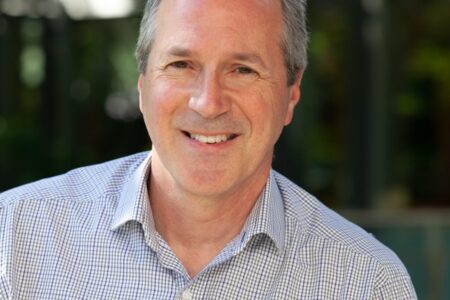Column: Healthy forests, healthy humans
If you look at a forest top from above or below, you might see a pattern of nicely spaced pathways twisting between the trees. This phenomenon is known as “crown shyness.”
Attempts have been made to explain it, with most experts concluding it’s due to many factors. Initially, it was thought to be wind making the upper branches rub against each other, damaging them to the point where they stop growing. But one study found no difference between windy and sheltered forests.
One hypothesis is that light levels allow the growing tree tips to detect when another is too close, causing them to stop growing in that direction. Others think it could be natural adaptation to help trees maximize access to resources like light and minimize competition.
Despite their crown “social distancing,” many trees communicate with each other through underground fungal networks, or “mycorrhizae.” As Peter Wohlleben explored in The Hidden Life of Trees and Wayne Grady and I in Tree: A Life Story, these “wood-wide webs” allow fungi to derive sugars from the trees, while providing trees with water, nutrients and better conditions for root expansion. They also facilitate transmission of warnings between trees about threats from insects, drought and more.
Both books illuminate how much we have to learn about trees and forests. Once you start exploring their complexity — the ways in which they interconnect to be stronger as a whole than their constituent parts — you’ll never see them in the same way.
We can’t live without trees and forests. They provide oxygen, food, wood and other resources, and sequester carbon. Forests — and all natural spaces — are also beneficial for our physical and mental health. Numerous studies illustrate how much forest walks can do for heart and respiratory health, immune system function and lowering stress levels.
Studies based on Japan’s long tradition of shinrin-yoku or “forest bathing” found people who spend time in nature inhale “beneficial bacteria, plant-derived essential oils and negatively-charged ions” that interact with gut bacteria to strengthen the body’s immune system and improve both mental and physical health.
One Japanese study of 585 participants found walking through forested areas decreased depression, anxiety, anger, fatigue and confusion, and increased vigour and other positive feelings compared with walking through city areas.
A UC Berkeley’s Greater Good Magazine article describes scientific findings that “walking in trees lowered people’s blood pressure, cortisol levels, pulse rates, and sympathetic nervous system activity (related to stress), while increasing their parasympathetic nervous system activity (related to relaxation)” — all good for heart health. Studies have also found proximity to forested areas improves respiratory health.
Some research even found just looking at images of forests can improve your state of mind!
Reducing stress and anxiety and boosting immune systems and respiratory health are all important in these troubling times — keeping in mind the current rules and recommendations about social distancing and hygiene.
Forests are also a critical defence against disease outbreaks. A Nation article notes 60 per cent of microbial pathogens that have emerged or re-emerged into new areas since 1940 (including HIV, Ebola, Zika and a number of coronaviruses) originated from animals — two-thirds from wildlife and the rest from pets and livestock.
Wild animals become more susceptible to pathogens if their habitat is damaged or destroyed, and this also puts infected animals in closer contact with people. The illicit wildlife trade is another area that needs to be brought under control to keep pathogens from spreading from one species to another.
Industrial agriculture, where many animals are kept together in close quarters can also increase disease spread, as we saw in 2014 when millions of poultry had to be slaughtered to contain a virulent form of avian influenza. Another argument for shifting to a plant-based diet!
Now and always, we need to protect, conserve, plant and restore forests, wetlands and other natural areas — to help in the fight against climate disruption and disease spread, and to ensure more people have access to areas that keep us mentally and physically well.
Regardless of whether or not you can get out into nature, it’s important now that we take care of each other and ourselves. Let’s take a lesson from the trees and recognize that we are stronger together.
David Suzuki is a scientist, broadcaster, author and co-founder of the David Suzuki Foundation. Written with contributions from David Suzuki Foundation Senior Editor and Writer Ian Hanington.
Learn more at davidsuzuki.org.


























